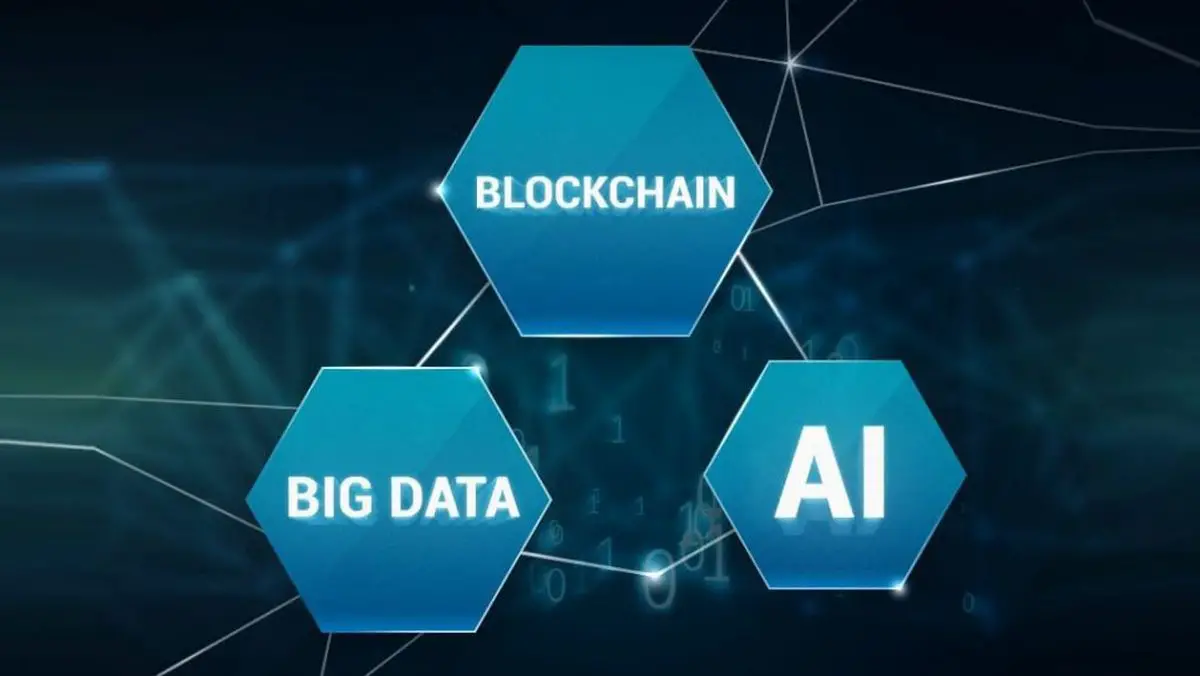Two popular technologies can complement each other in a way that especially companies can benefit, yes we are talking about Blockchain and Big Data.
Blockchain and Big Data are two technologies in full swing, but they are also two complementary technologies. Learn how blockchain transforms data storage and analysis.
In recent years, blockchain is at the center of computing technologies. It is a cryptographically secure distributed database technology for storing and transmitting information. Each record in the database is called a block and contains details such as the date of the transaction and a link to the previous block.
The main advantage of the blockchain is that it is decentralized. No one checks the data entered or its integrity. However, these checks are carried out continuously by the various computers on the network. These different machines contain the same information. Corrupted data from one computer cannot enter the chain because it does not match the equivalent data held by the other computers. In short, as long as the network exists, the information remains in the same state.
Blockchain and Big Data to ensure data quality
Thanks to cryptocurrencies such as Bitcoin, Ethereum, blockchain can support any kind of digitized information. That is why it is possible to use it in the field of Big Data, especially to increase the security or quality of data.
For example, a hospital can use it to ensure that patient data is kept secure, up-to-date and its quality is fully maintained. By placing healthcare databases on the blockchain, the hospital ensures that all of its employees will have access to a single, unalterable data source.
Indeed, poor data management in the healthcare environment carries the risk of patient mistreatment, misdiagnosis, or the loss or corruption of their test results. Similarly, two physicians supporting the same patient may have access to two different data sets. The Blockchain eliminates this risk.
Blockchain and Big Data to protect data
This technology also helps prevent potential data leaks. Once information is stored in the channel, even the most senior managers in a company will need multiple permissions from other points in the network to access the data. Therefore, a cybercriminal can’t get a hold of it.

By extension, the Blockchain allows for more serene data sharing. To use the hospital example, an institution may need to share healthcare data with the courts, insurance companies, or a patient’s employers. However, without the Blockchain, this procedure may present risks.
Blockchain and Big Data technologies for data analytics
The Blockchain also complements data analytics technologies. For example, in 2017, a consortium of 47 Japanese banks signed up with the new Ripple to facilitate the transfer of money between bank accounts via the Blockchain. Typically, real-time transfers are costly, especially due to the risk of double-spending fraud (issuing two transactions using the same asset). The blockchain eliminates this risk. In addition, Big Data analyzes the identification of risky transactions.
Better yet, the Blockchain enables banking institutions to detect fraud attempts in real-time. Knowing that the Blockchain contains records for every transaction, it allows banks to scan data for patterns in real-time. The Blockchain and Big Data thus make it possible to maximize the security of banking transactions.
Blockchain and Big Data: privacy issues
However, this use of the Blockchain also raises privacy issues, in direct contradiction to the reason this technology was originally popularized. Several experts fear that transaction records could be exploited for consumer profiling or other misuses.
However, blockchain improves the transparency of data analysis. If an entry cannot be verified, it is automatically rejected. Therefore, the data is completely transparent. Other experts are also concerned about the impact of Blockchain and Big Data on the environment.
Blockchain and Big Data: Social data to predict the price of Bitcoin
Data from social networks (Social Data) can be very useful for predicting consumer behavior. However, it turns out that Bitcoin users and social networks have many demographic similarities, as well as commonalities in opinions and attitudes.
According to Bill Schmarzo, CTO of Dell EMC Services, the Blockchain allows people to regain control over their data and therefore monetize it for businesses. Consumers can control who has access to their blockchain data without the intervention of a third party.
So, for example, they can request discounts on products in exchange for their data. Eventually, the blockchain could create new marketplaces where individuals and businesses would engage in data trading.
Blockchain could account for 20% of the Big Data market by 2030
According to Neimeth’s estimates, the blockchain ledger could be worth as much as 20% of the total big data market by 2030, producing up to $100 billion in annual revenue,” Neimeth says. It would produce more than $100 billion in annual revenue, more than PayPal, Visa and Mastercard combined.
Analyzing large amounts of data will be essential for tracking transactions and for companies using blockchain to make better decisions. That’s why new Data Intelligence services are emerging to help financial institutions, governments, and other businesses discover who they interact with within the Blockchain and uncover hidden patterns.





